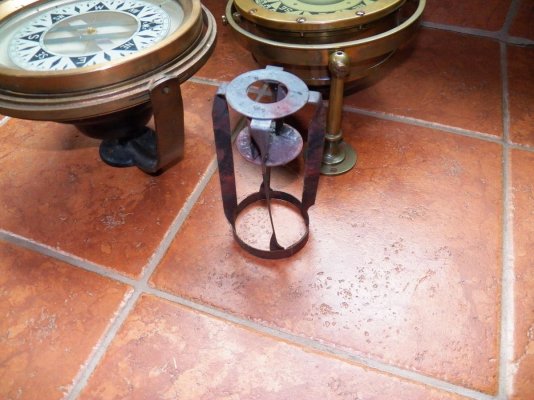TheLake
Veteran Member
- Joined
- Oct 16, 2021
- Messages
- 58
- Vessel Name
- The Lake
- Vessel Make
- 42' CHB Tricabin
Hi all,
I recently purchased a 42' CHB that I plan on living aboard with my wife in the Vancouver Island area.
The boat has a Dickerson Diesel stove with a two wrap coil that circulates anti-freeze to two Radex heater fans (one in the aft cabin and one in the v-berth).
The stove works great, but I am continuing to have trouble balancing the air/diesel mixture. I get it started and a nice yellow flame above the burner ring with the fan off, the barometric damper about 1/4" open and the fuel value set to 2.5.
Seems like after a while when I look up the flames are very high, soot has covered most of the glass window and I end up with soot blowing out of the chimney top with little pellets of soot covering my upper bridge roof and surrounding areas. This has happened to me more than once.
At this point I get stuck because I can't really see the flame anymore through the window so I basically end up shutting down the stove, waiting for it to cool and then clean the inside of soot before lighting again.
As I am looking to use this as my full time heat source I need some advice/help.
My thoughts include:
- maybe I need to get a brush and clean the chimney (is this a regular maintenance thing? If so, where can I buy a brush as Dickerson don't seem to have anything like that on their website)
- maybe I should take the fuel control off and clean it (I did get a video on how to do this)
Other thoughts?
I am somewhat surprised that the flames go so high. The manuals all say don't burn the flame below the burner ring. But when this happens I end up turning the fuel down to as low as it will go before shutting off and the flames are still intense and lapping the bottom of the cast iron stove top.
Finally - is there a company that specializes in these type of stoves/heating systems in the Sidney, BC area that I could maybe get out to review the setup?
Any help would be great!
Chris
I recently purchased a 42' CHB that I plan on living aboard with my wife in the Vancouver Island area.
The boat has a Dickerson Diesel stove with a two wrap coil that circulates anti-freeze to two Radex heater fans (one in the aft cabin and one in the v-berth).
The stove works great, but I am continuing to have trouble balancing the air/diesel mixture. I get it started and a nice yellow flame above the burner ring with the fan off, the barometric damper about 1/4" open and the fuel value set to 2.5.
Seems like after a while when I look up the flames are very high, soot has covered most of the glass window and I end up with soot blowing out of the chimney top with little pellets of soot covering my upper bridge roof and surrounding areas. This has happened to me more than once.
At this point I get stuck because I can't really see the flame anymore through the window so I basically end up shutting down the stove, waiting for it to cool and then clean the inside of soot before lighting again.
As I am looking to use this as my full time heat source I need some advice/help.
My thoughts include:
- maybe I need to get a brush and clean the chimney (is this a regular maintenance thing? If so, where can I buy a brush as Dickerson don't seem to have anything like that on their website)
- maybe I should take the fuel control off and clean it (I did get a video on how to do this)
Other thoughts?
I am somewhat surprised that the flames go so high. The manuals all say don't burn the flame below the burner ring. But when this happens I end up turning the fuel down to as low as it will go before shutting off and the flames are still intense and lapping the bottom of the cast iron stove top.
Finally - is there a company that specializes in these type of stoves/heating systems in the Sidney, BC area that I could maybe get out to review the setup?
Any help would be great!
Chris

